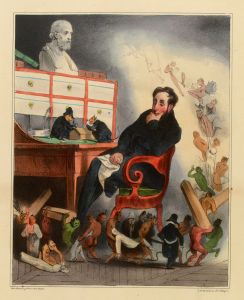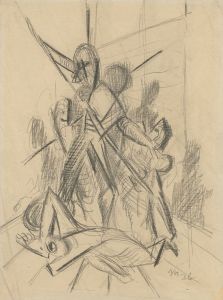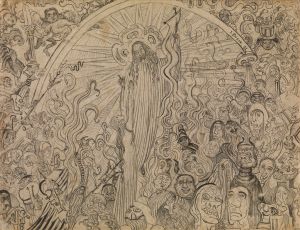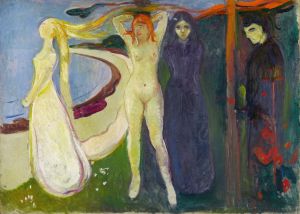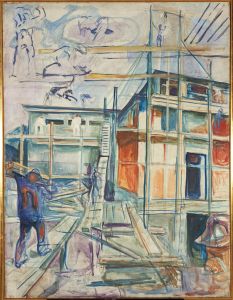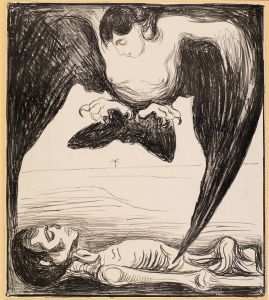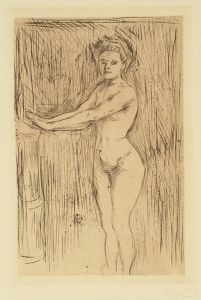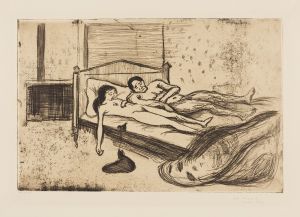
Death in the Sickroom
A hand-painted replica of Edvard Munch’s masterpiece Death in the Sickroom, meticulously crafted by professional artists to capture the true essence of the original. Each piece is created with museum-quality canvas and rare mineral pigments, carefully painted by experienced artists with delicate brushstrokes and rich, layered colors to perfectly recreate the texture of the original artwork. Unlike machine-printed reproductions, this hand-painted version brings the painting to life, infused with the artist’s emotions and skill in every stroke. Whether for personal collection or home decoration, it instantly elevates the artistic atmosphere of any space.
"Death in the Sickroom" is a painting by the Norwegian artist Edvard Munch, created in 1893. This work is part of Munch's larger series known as "The Frieze of Life," which explores themes of love, anxiety, and death. "Death in the Sickroom" is a poignant depiction of grief and loss, reflecting Munch's personal experiences with illness and death within his own family.
The painting portrays a somber scene set in a sparsely furnished room. At the center of the composition, a young girl, presumably the artist's sister Sophie, is lying on a bed, gravely ill. Surrounding her are various family members, each absorbed in their own sorrow and contemplation. The figures are arranged in a circular formation, emphasizing the isolation and introspection of each individual. Munch's use of muted colors and stark lines enhances the melancholic atmosphere of the scene.
Edvard Munch's personal history deeply influenced the creation of "Death in the Sickroom." His mother died of tuberculosis when he was just five years old, and his older sister Sophie succumbed to the same disease when she was only fifteen. These early experiences with death had a profound impact on Munch, shaping his artistic vision and thematic focus. The painting captures the emotional weight of these losses, conveying a sense of despair and helplessness.
Munch's style in "Death in the Sickroom" is characteristic of his broader body of work, which often features expressive, symbolic imagery. The figures in the painting are rendered with a certain degree of abstraction, their faces and forms simplified to convey emotional states rather than realistic details. This approach allows Munch to communicate the psychological depth of the scene, drawing viewers into the emotional experience of the characters.
The composition of "Death in the Sickroom" is notable for its use of space and perspective. The room is depicted with a sense of claustrophobia, the walls closing in around the figures. This spatial constriction mirrors the emotional confinement of the characters, each trapped in their own grief. Munch's use of perspective also directs the viewer's gaze towards the central figure of the sick girl, reinforcing her role as the focal point of the scene.
"Death in the Sickroom" is housed in the Munch Museum in Oslo, Norway, which holds the largest collection of Munch's works. The painting is considered one of Munch's masterpieces, exemplifying his ability to convey deep emotional and psychological states through his art. It remains a powerful testament to the artist's exploration of human suffering and the universal experience of loss.
In summary, "Death in the Sickroom" by Edvard Munch is a significant work that captures the artist's personal grief and broader themes of mortality. Through its evocative composition and expressive style, the painting continues to resonate with audiences, offering a poignant reflection on the nature of human suffering.





